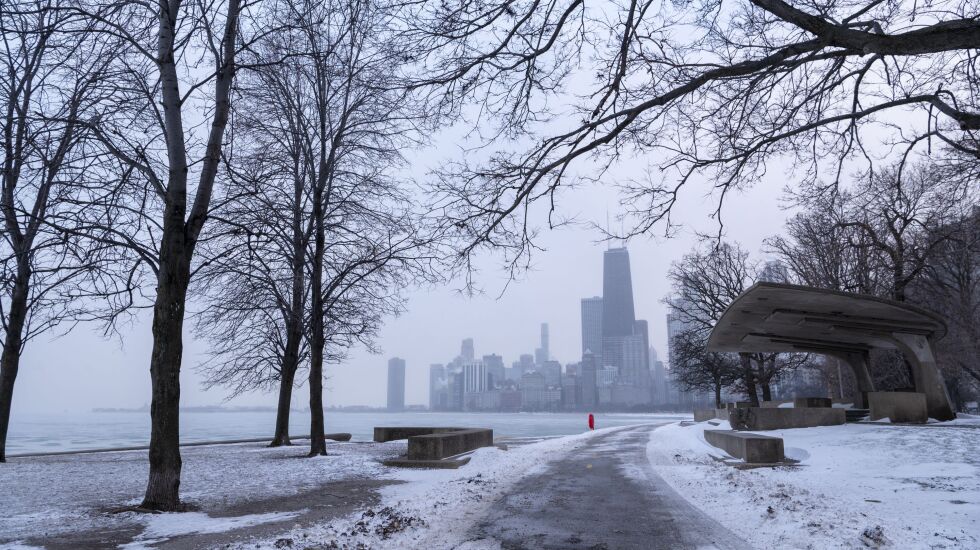
After Chicago weathered its coldest December day in nearly 40 years, temperatures started bumping up ever so slightly heading into Christmas — not that it feels much less frightful.
The mercury topped out at minus 1 on Friday, the most frigid December temperature felt in the city since 1983, according to the National Weather Service.
Temperatures climbed to 1 degree early Saturday after a brutal 29 consecutive hours below zero, and eventually hit 14 at O’Hare Airport by mid-afternoon.
Wind chills still were projected to sink as low as 25 degrees below zero through Christmas Eve, forecasters said.

The severe weather was still causing headaches at Chicago’s airports Saturday, too. By 4 p.m., 233 flights had been canceled at O’Hare, where delays were averaging 35 minutes, and 139 flights were canceled at Midway, where delays were averaging 77 minutes.
Highs were forecasted to be in the single digits to teens on Christmas Day, with a possibility of accumulating snow late Sunday into early Monday.
Despite the string of cold days, NWS meteorologist Brian Leatherwood said he expects temperatures to improve throughout the week.
“At some point, that high pressure [system] is going to shift off to the south and to our east and the strong northerly winds are going to become strong southerly winds that are going to bring all that warm air from down south,” Leatherwood told the Sun-Times.
He said highs are “expected to reach the lower 40s by Wednesday and could push 50 degrees by next weekend.”
Leatherwood added the drastic swing in temperature in the city is not normal, but also not unheard of.
“We’re in the La Niña, which is where you can see these extreme weather systems that move through ... It throws all this arctic air at you, but then it tries to transition back to a little bit more of a ‘not as cold’ scenario that we would normally have in the winter.”
Temperatures for New Year’s weekend were expected to be above normal, though rain is a possibility Saturday into Sunday.
“Sometimes when you get into these La Niña situations where overall the temperatures are above normal, it tends to be a lot wetter,” Leatherwood said. “Whether that precipitation is going to be liquid, frozen or snow is hard to determine ... It’s not going to be blue skies, though that can change.”







